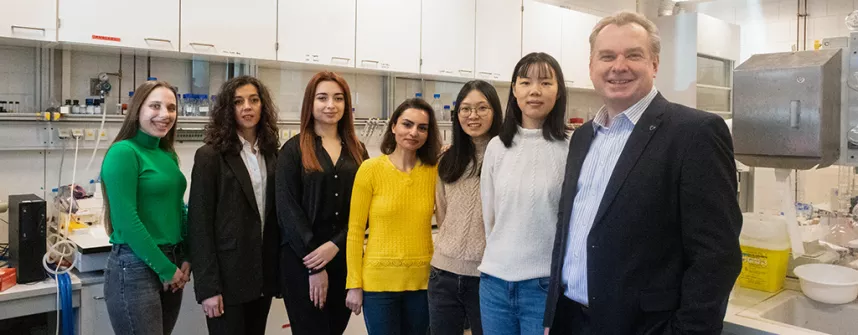Breakthrough in Cell Research: Jacobs University Scientists Discover New Method for Drug Delivery
March 24, 2022
Cells are masters of self-protection. Their membranes let in substances that are vital for them, but block out other substances – including those that could be used to fight diseases. Overcoming this natural barrier is a central concern of cell research. Scientists at Jacobs University Bremen and the Spanish University of Santiago de Compostela have now succeeded in doing so. They have developed a new method for transporting drugs and peptides into the cell. The results of their research have now been published in the renowned journal Nature.
, Andrea Barba-Bon, the first author of the article in Nature, worked together with Professor Werner Nau in his research team to carry out the first successful experiments (Source: Jacobs University)."Our method has potential for broad application," said Werner Nau, Professor of Chemistry, in whose research group the method was developed. It is based on a new chemical concept that the researchers have been working on since 2015. Until now, complex and sometimes toxic formulations had to be used to overcome the cell walls. The Jacobs University researchers are achieving this effect by using water-soluble clusters based on the chemical element boron. In experiments, they demonstrated that there is an optimal size for these boron clusters at which the penetration process is particularly efficient. "If the molecules are too small, they don't work. If they are too large, they have membrane-damaging properties," reported Andrea Barba-Bon, the first author of the article in Nature and a post-doctoral researcher who carried out the first successful experiments.
The scientists succeeded in placing various bioactive substances in cells. Among them were those that successfully overcame antibiotic resistance. "There are many potential applications to be developed with this method, for example, for the delivery of the next generation of therapeutics such as short peptides or even protein-based drugs" said Javier Montenegro, in whose Spanish research group the cell biology experiments were conducted. Peptides are sought-after active ingredients. They are used, for example, in cancer therapies, antibiotics, vaccines, and numerous novel drugs. They are also used in the cosmetics industry.
The process also has the potential to give a boost to fundamental research in cell biology. It makes it much easier to transport positively charged and neutral drug molecules or fluorescent dyes into living cells, which previously could not be introduced.
"Boron clusters as broadband membrane transporters," is the title of the article in Nature. The journal, first published in the United Kingdom in 1869, is one of the most influential and renowned publications in the field of natural sciences. "After several years of intensive basic research, it is now a great success for us to be able to publish the application potential of our research results there," Professor Nau said.
Article in Nature:
https://www.nature.com/articles/s41586-022-04413-w
Questions can be addressed to:
Professor Werner Nau
Dean and Professor of Chemistry
Email: w.nau [at] jacobs-university.de
Phone: +49 421 200-4339
